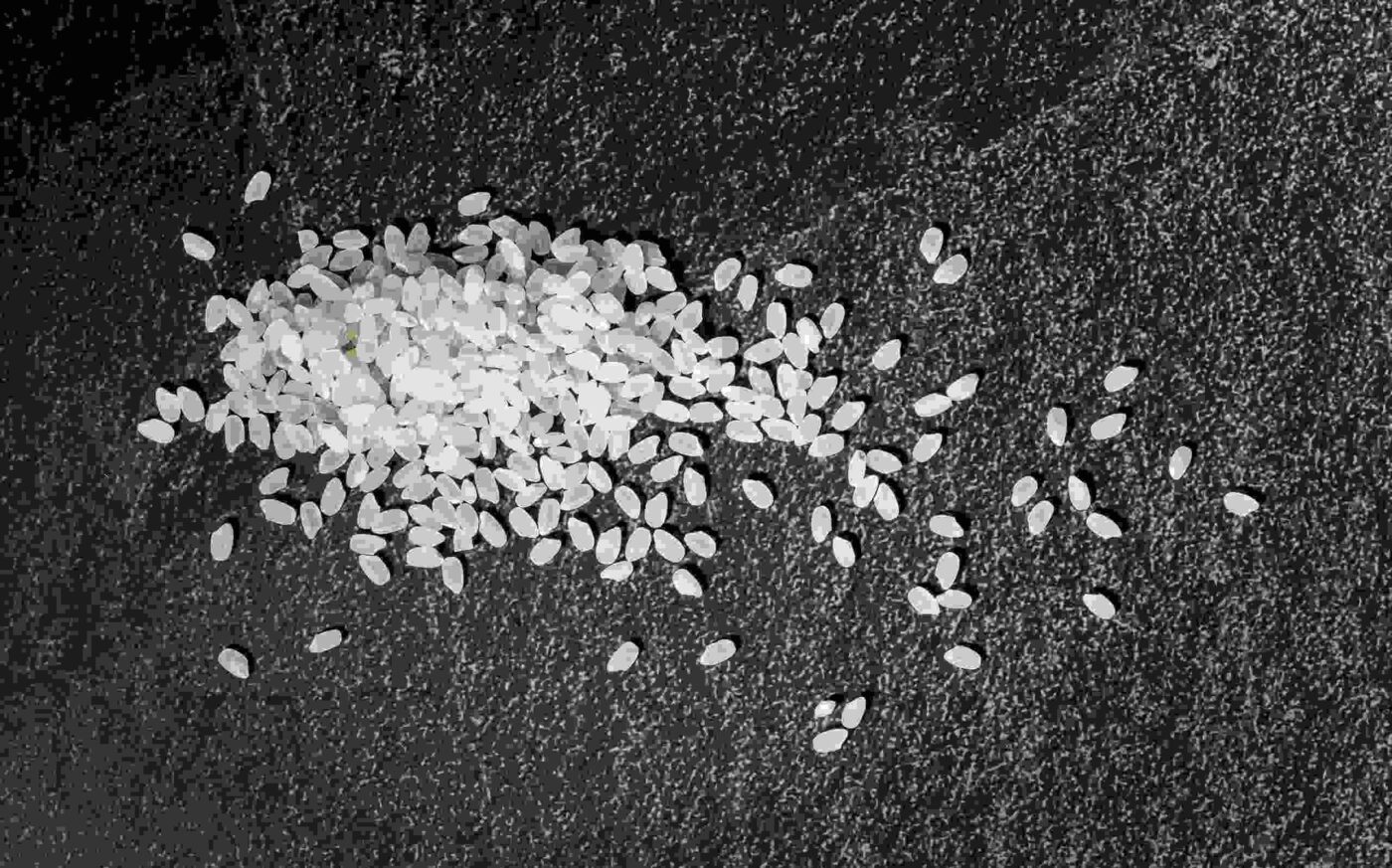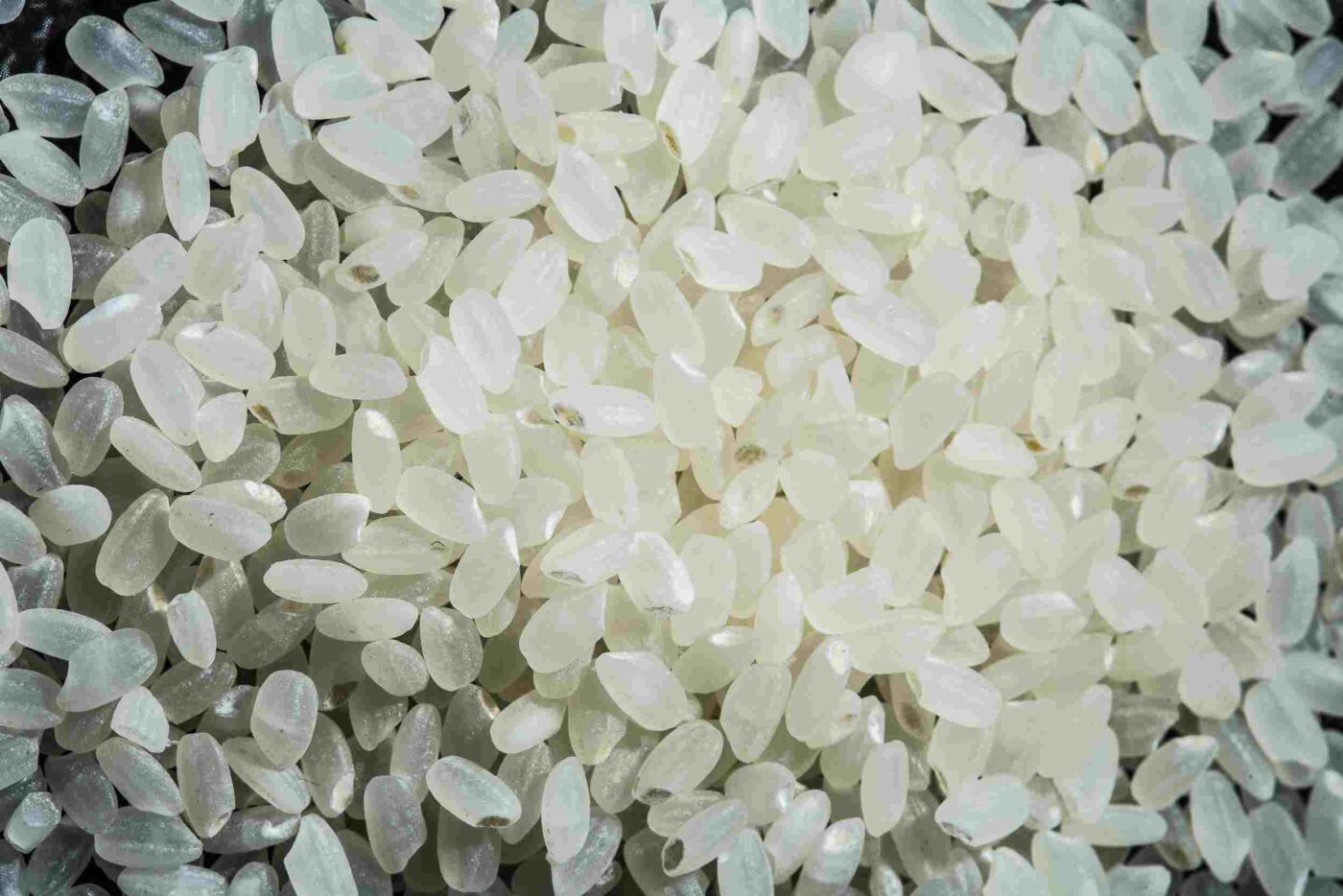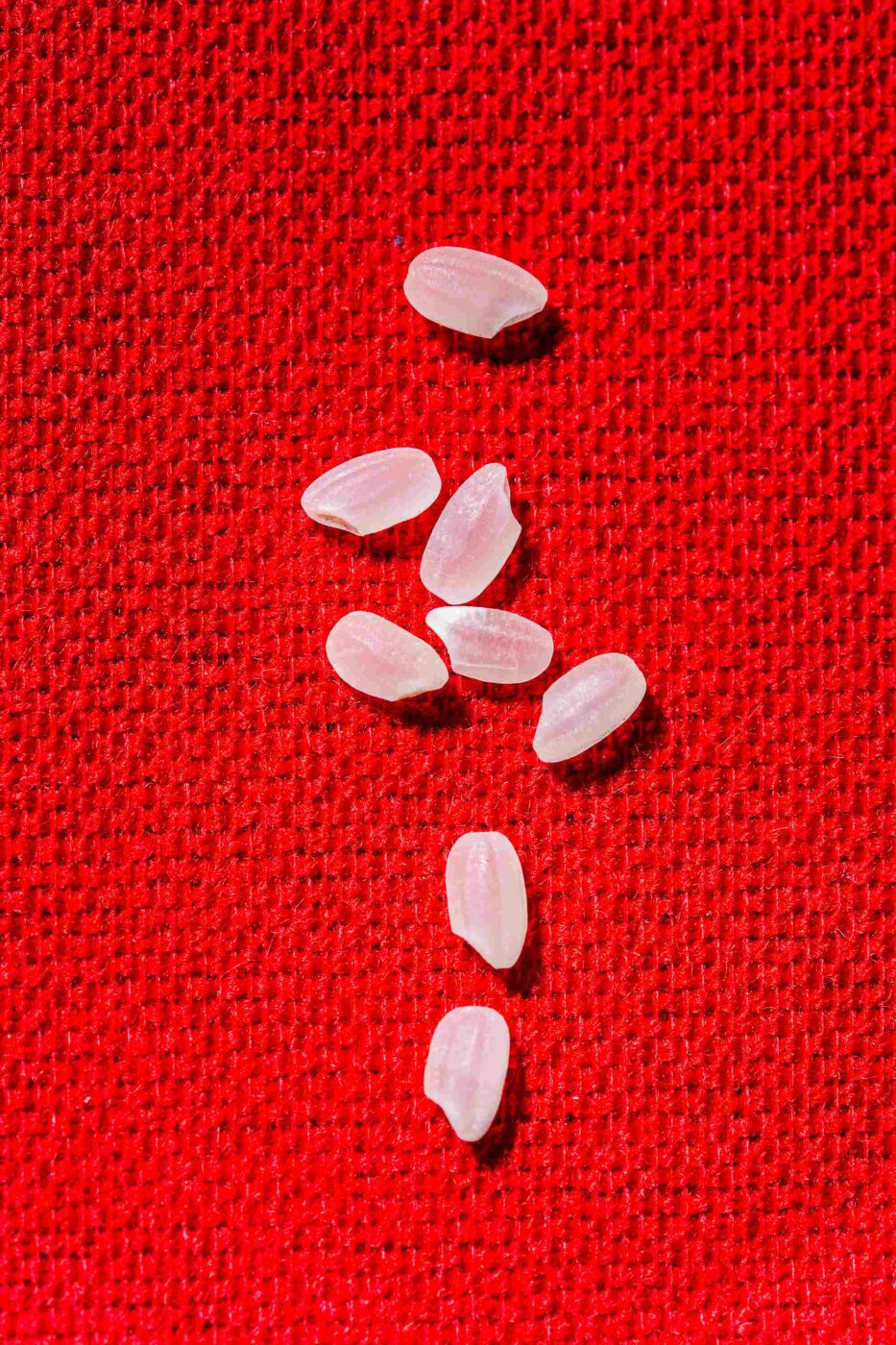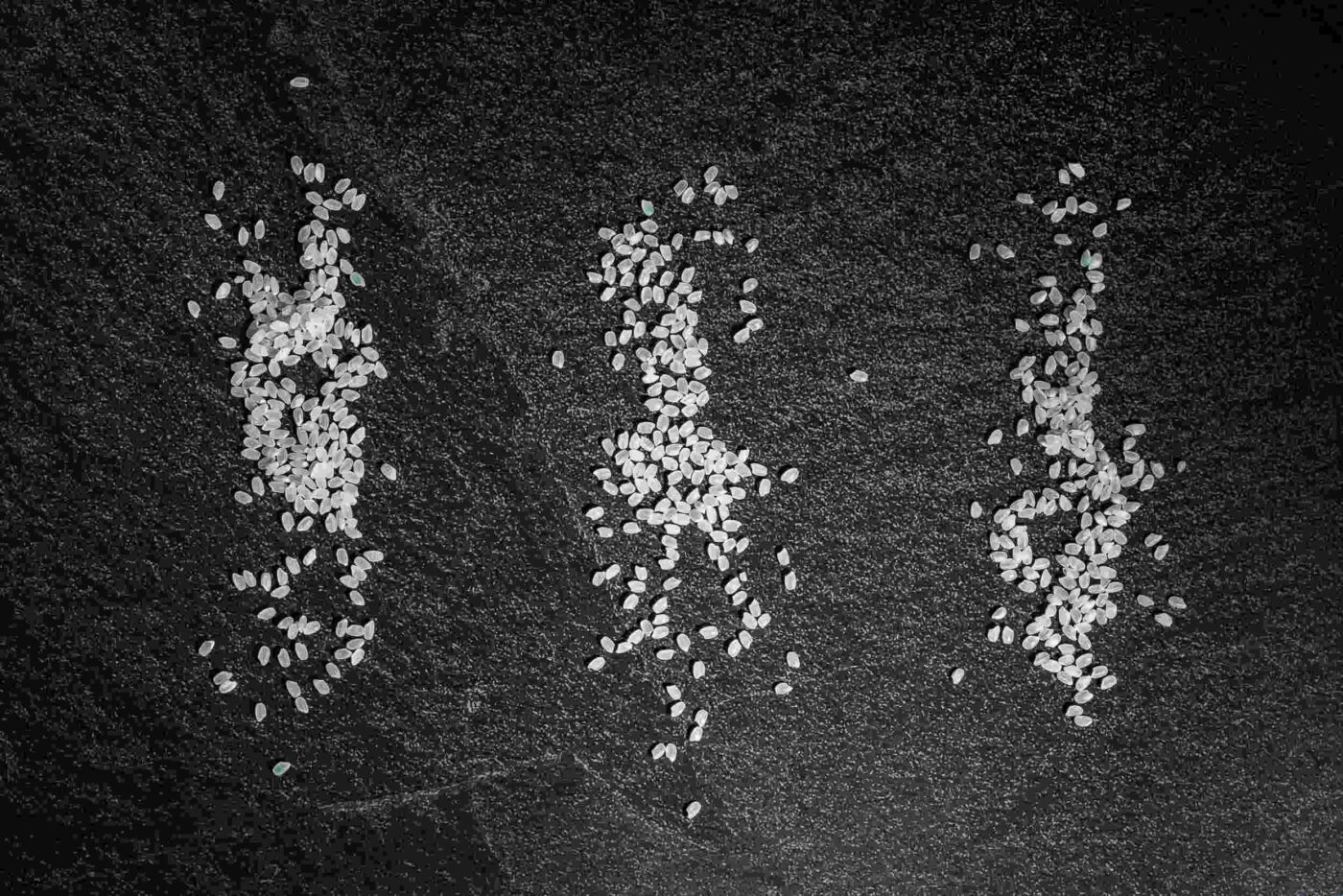Koshihikari: why this rice for this bluefin tuna
Summary:

The staple of half of humanity, the central core of nutrition and the bedrock of so many store cupboards. More than 500 million tonnes are harvested each year around the world, with our Chinese neighbours the global leaders in terms of production. Rice, sacrosanct rice, full of carbohydrates, thiamine, phosphorus, millennia of history, and starch. Small, pearly grains, skilfully cooked, provide wonderful fuel for body and mind.
And also for the ephemeral excellence of sushi. Thanks to its geography and climate, Southeast Asia is the perfect place to grow this vital crop. It makes up 40% of the diet of my fellow Japanese, whether for breakfast, lunch or dinner, as sushi, onigiri, sekihan, chirashizushi, futomaki… Despite the fact that Japan produces just seven million tonnes per year, with 1.5 million hectares given over to this monocotyledon which grows in flooded fields. There are more than 600 varieties of rice which flourish throughout Japan’s numerous prefectures, but we will focus here on those strains that most appeal to a sushiman, the best options for the finest nigiri of, for example, Fuentes Bluefin Tuna. The rice polished to different degrees which results in the elixir known as sake will be the subject of another lengthy post in the future.

In broader terms, when it comes to rice there are three types of grain around the world: long, medium and short. The last of these is the most common in Japan (the japonica variety, or Oryza sativa), and the most useful for preparing sushi, in particular nigiri. By its firmness, its palatability and its conveyance of flavour shall ye know it. What do we require of it? To remain firm after boiling, to be mild, only as sticky as needed. It must be fairly sweet (umami aftertaste), and give out more flavour the longer you keep it in your mouth. One example of a medium grain would be Californian calrose, which is having a tough time of it right now because of the drought afflicting the land of vineyards and film stars. Calrose is highly glossy, shiny, and is great for making the maki rolls which were so in vogue in California two decades ago. Meanwhile, indica gives a long grain, making it unsuitable for sushi, but perfect for fried rice.
The king of sushi
Of the 600 varieties of Japanese rice, some 260 are classified as essential or basic foodstuffs. The most widespread rices, in terms of the area they cover, are: koshihikari, hitomebore, hinohikari, akitakomachi and nanatsuboshi. They can claim to be the most widely used at home, although koshihikari is excellent for bluefin tuna nigiris, and could be dubbed the King of Sushi. “We have an excellent koshihikari from Nigata prefecture, with good density, really popular with chefs. We also have calrose from California, an Italian selenio, and even varieties from Vietnam. In the Ebro Delta they grow akitakomachi, which is not very stable, but is outstanding if it turns out right. But as I say, koshihikari is unrivalled,” Jaime Serrano tells us, as one of the leading lights at Cominport, Spanish distributors of the finest Japanese produce since 1995.

“Koshihikari is glutinous, sweet, excellent. It was created back in the 1950s by crossing two different varieties. It has its own flavour, so to speak. It boils really well, and the grain gels, with all the proteins cooking equally. It absorbs the water wonderfully well, and blends perfectly with the acidity of the tuna when making nigiris,” explains Juan Bautista, of Rocío Tapas y Sushi in Malaga, one of Spain’s most distinguished and experienced sushi chefs, a walking encyclopaedia who had a uniquely wise mentor (Master Kikuchi), a lover of sake who knows the rices of my homeland back to front.
In visual terms, koshihikari reveals a uniform polish, a rich fragrance after boiling, and does not harden with heat, retaining its magical properties. Juan Bautista rightly traces the origins of the variety, grown above all in Nigata and Fukui prefectures. These days, its stalks can be seen the length and breadth of the nation, from Tohoku to southern Kyushu. The undisputed champion, it accounts for a third of Japan’s whole rice industry. The name has its own poetry: it comes from koshi (the old name for Fukui) and hikari, which means light. The farmers of Nigata placed all their hope in this variety, which was meant to “shine like a brilliant light in the fields”. Their prayers were answered…

And in a sector with such demanding standards, the Japan Grain Inspection Association oversees the excellence of each producer, and establishes the quality framework for rice (once boiled). This is based on six parameters: outward appearance, fragrance or scent, flavour, stickiness, hardness, and an overall evaluation. The finest koshihikari has for years been the yardstick, the standard-setter, the benchmark, with 43 prefectures cradling it like a baby in their beautiful paddy fields. The final scores follow a scale from superior category A+ rice, A (simply ‘good rice’), A’ (merely standard quality), B (slightly below standard) to B’ (without merit).
Beyond koshihikari
And aside from the wonderful koshihikari, what other varieties are used by the leading sushi chefs in my homeland, the most sublime bars where patrons pay upwards of 400 euros for the very best omakase? Well, hitomebore (Miyage prefecture, 1981, a hybrid of koshihikari and hatsuboshi), tsuyahime (Yamagata, 1998, with superlative umami), sasanishiki (Miyagi, with 60 years behind it, very low in lipids but more susceptible to oxidation) and lastly akitakomachi (created in 1984 by crossing koshihikari with ou no, excellent for nori makis).

A historical footnote to round things off: it is estimated that at the end of the Edo period (1603-1868, when Japanese cuisine as we know it flourished, along with the most refined sushi prepared to mandatory standards, before Western modernisation and influence permeated my country), the average Japanese could polish off almost half a kilo of rice a day. Current consumption is some 180 g per day per person. The very best nigiri, topped with a slice of Fuentes toro or chutoro of ineffable length, weighs 12 grammes, with a base comprising precisely 98 grains of rice, following a journey replete with history, effort and excellence. THE END.
